How to Relieve Muscle Cramps


Written and verified by Doctor Carlos Fabián Avila
Muscle cramps a caused by overexertion, pregnancy, or a lack of potassium. Unfortunately, these “jerks” are painful and don’t let you walk properly.
This is why we’ve decided to share some tips to relieve your cramp pain.
Tips to Relieve Muscle Cramp Pain
Acute pain in the legs or calves known as “cramps” can last from a few seconds to several minutes. Follow these tips to relieve cramp pain:
-
Flex your toes
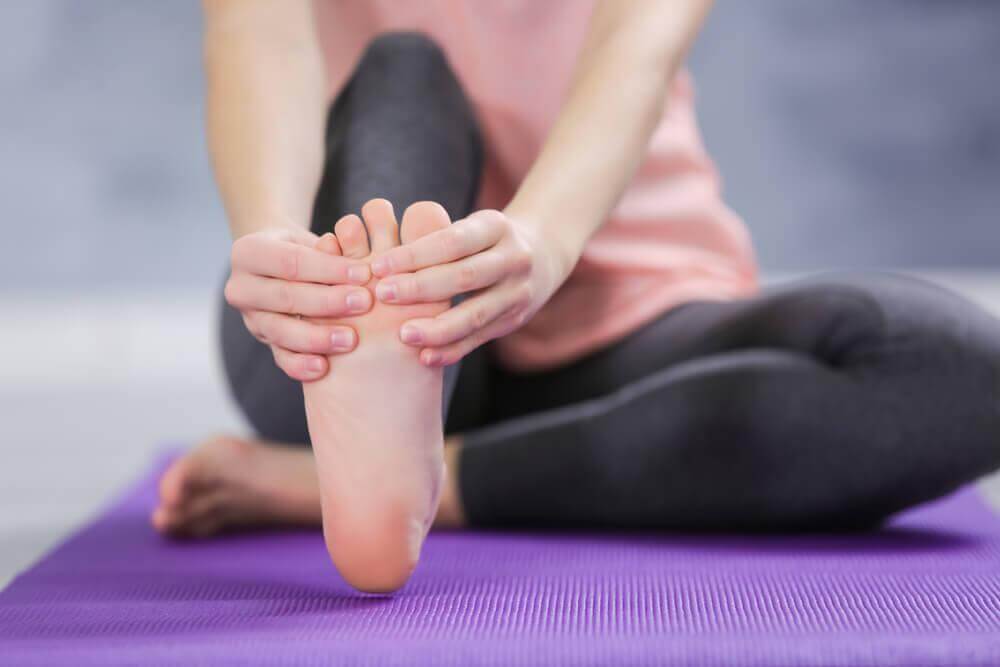
When you start to feel that “yank”, stretch your legs on a bed, couch, or chair. Bend your toes back (as if pointing to the knees). Move your torso forward and hold your toes with one hand. Hold this position for at least a minute. Rest and repeat two more times.
See also: 3 Tips to Help Treat Painful Cramps
-
Walk on your heels
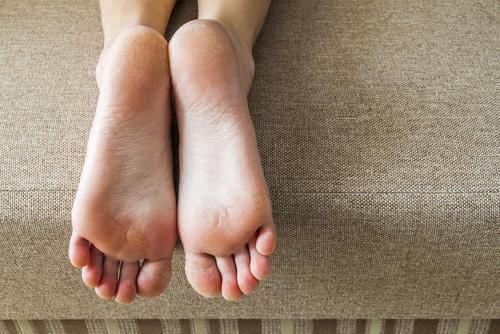
Take off your shoes (leave your socks on if you want) and lift your feet up until only your heels are touching the floor. You can grab hold of any furniture to steady yourself. Take a few short steps.
The pressure on your heels and the position of your muscles will relieve your muscle cramps. Also, this technique improves blood circulation in the lower limbs.
-
Massage yourself
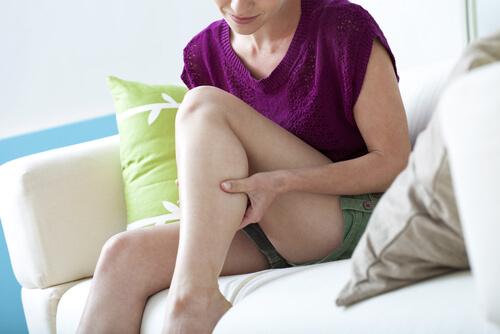
Massages can help relieve your pain so you can continue your activities, no matter which body part is cramped. They also increase blood flow to the affected area.
Try to stretch your muscles so they can relax. You can do the massages with your hands or with the help with an item, such as a tennis ball or roller.
We recommend that you read: How to Prevent Muscle Cramps
-
Stretch your calves
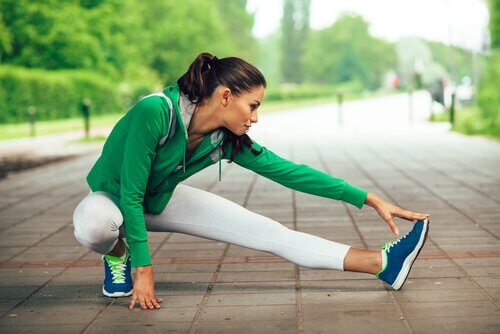
If your calves are cramped up, you can relieve your pain in a very simple way.
- Stand facing a wall.
- Place the cramped leg behind the other at a distance of about 30 cm (15 inches).
- Bend your front knee so your back leg stretches.
- You can rest your hands on the wall to steady yourself.
You can also start in the same position as the previous exercise and rest the sole of your foot on the wall (including your toes).
- Your heel should be touching the ground.
- Your hands should be resting on the wall.
- Exert pressure from your arms by flexing your elbows. This way, your calf will stretch.
-
Walk on your tiptoes
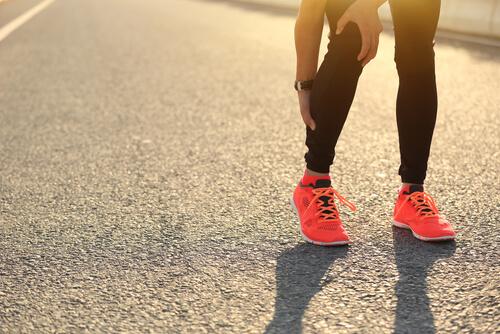
This exercise helps reduce cramp pain because it stretches the calves and improves blood circulation in the area. It’s as easy as “tiptoeing” around the room.
You can also stand with your feet spread apart and elevate your heels. You can grab hold of a table, chair, wall, etc. Hold for a few seconds and then lower your heels. Start again. Repeat until the pain goes away.
-
Apply heat
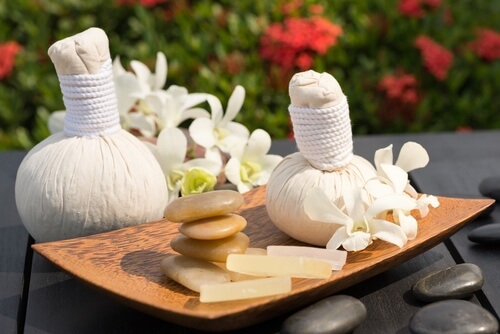
Taking a warm shower is also an excellent way to relieve cramping. Make sure the water hits the affected areas.
-
Shift your position
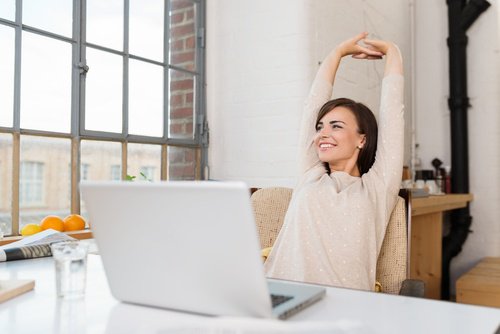
If you’re cramping because you’ve been sitting in front of the computer in the same position for hours, try to shift your position a bit and make sure the affected area isn’t bent.
Stand up, stretch your legs, lie on a couch (or pull back your chair), etc.
-
Elevate your legs
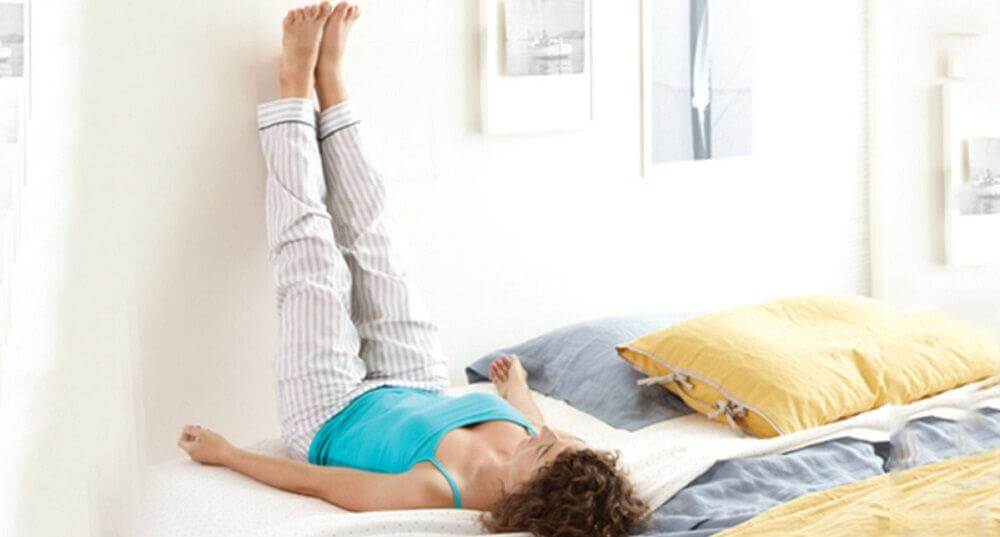
This trick is used for nighttime cramps (that happen when you’re sleeping). Place a cushion or some clothes under your calves so they’re higher than the rest of your body. Try to sleep this way every day.
If you are prone to night cramps, we recommend doing the following exercise before bed: lie down with your head on the foot of the bed. Elevate your legs and rest your heels on the wall behind the headboard. Hold this position for a few minutes so your blood recirculates.
How to Prevent Cramps
You should also keep the following tips in mind to prevent muscle cramps:
Stay hydrated
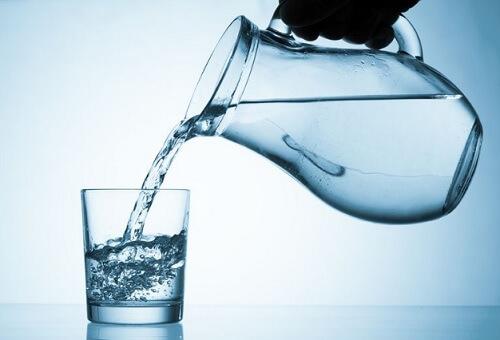
Drink at least 6-8 glasses of water a day. If it’s summer or you exercise during the day, you should drink even more.
Wear appropriate clothing
Your shoes should be padded, support your plantar arch, and allow the foot to move comfortably. Your socks shouldn’t be too tight on your calves. We also don’t recommend using really tight pants.
Walk around
During working hours, get up from your desk, walk a little around the office, take the stairs instead of the elevator, etc. Also, use your downtime to exercise your calves by bending them or doing circular movements.
All cited sources were thoroughly reviewed by our team to ensure their quality, reliability, currency, and validity. The bibliography of this article was considered reliable and of academic or scientific accuracy.
- Miller, T. M., & Layzer, R. B. (2005). Muscle cramps. Muscle and Nerve. https://doi.org/10.1002/mus.20341
- Armstrong, S., & Cross, T. (2013). Exercise-associated muscle cramps. Medicine Today.
- Minetto, M. A., Holobar, A., Botter, A., & Farina, D. (2013). Origin and development of muscle cramps. Exercise and Sport Sciences Reviews. https://doi.org/10.1097/JES.0b013e3182724817
- Schmidt, F. P., & Körber, K. (2014). Efficacy of a massage roller combined with cooling lotion in the prevention of calf muscle cramps. Phlebologie. https://doi.org/10.12687/phleb2167-2-2014
- M., L. F., H.D., K., & S., K. (2012). Treatment of muscle cramps: Neurologist practice patterns. Canadian Journal of Neurological Sciences.
- Hawke, F., Chuter, V., Walter, K. El, & Burns, J. (2012). Non-drug therapies for lower limb muscle cramps. Cochrane Database of Systematic Reviews. https://doi.org/10.1002/14651858.CD008496.pub2
This text is provided for informational purposes only and does not replace consultation with a professional. If in doubt, consult your specialist.








